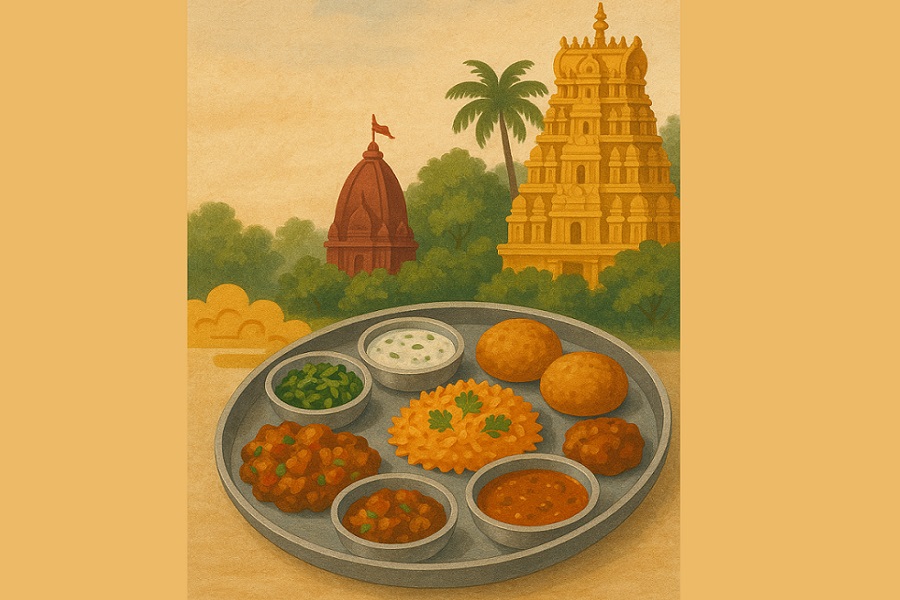“Temple Food Trails of India: Where Every Bite Is a Blessing”

In the vast culinary landscape of India, there lies a sacred thread that connects food not just with flavor, but with faith—temple cuisine. Across the country, temple kitchens feed millions, not as a commercial service, but as an act of devotion. Welcome to the Temple Food Trails of India—a journey where you don’t just eat, you experience prasadam, a divine offering.
What Makes Temple Food Unique?
Temple food, often based on Sattvic principles, is free of onion, garlic, and artificial flavoring. It is pure, seasonal, local, and prepared with intention and prayer. The experience goes beyond taste—it nourishes the soul, reflecting centuries of cultural, spiritual, and culinary traditions.
Major Temple Food Destinations in India
1. Golden Temple, Amritsar – The Langar of Equality
The langar at Harmandir Sahib (Golden Temple) is perhaps the world’s largest free community kitchen, feeding up to 100,000 people a day.
Meals: Simple yet soulful—dal, roti, sabzi, and kheer
Unique angle: Cooked and served by volunteers of all backgrounds in a spirit of seva (selfless service)
Legacy: The food symbolizes oneness and equality, served without caste or class distinctions.
2. Jagannath Temple, Puri – Chappan Bhog Legacy
The temple of Lord Jagannath in Odisha offers 56 unique dishes daily, known as Chappan Bhog, cooked in earthen pots over wood fire.
Meals: From sweet rice to dalma, khichdi, and pithas
Unique angle: The kitchen follows ancient Vaishnavite rituals, said to be the largest open wood-fired kitchen in the world
Spirituality: Food is believed to be consumed by Lord Jagannath first and then offered to devotees.
3. Tamil Nadu Temples – Annadanam Traditions
Temples like Madurai Meenakshi, Rameswaram, and Palani Murugan offer Annadanam (free meals) every day to thousands.
Meals: Sattvic South Indian thali with rice, sambhar, poriyal, curd, and sweet pongal, served on banana leaves
Unique angle: Food as a ritual offering, rooted in the belief that feeding someone is equivalent to worshipping God
Community role: Often prepared by hereditary temple cooks using recipes passed down through generations.
Why This Is More Than Just Food Tourism
Temple food trails aren’t about gourmet indulgence—they are about sacred simplicity, ritual, and community bonding. Each bite is a reminder of gratitude, humility, and shared humanity.
Sustainable: Locally sourced, seasonal, and mostly plant-based
Inclusive: Open to all, regardless of background
Spiritual: Cooking is meditative; eating is reverent
Emerging Experiences in Temple Food Tourism
Guided food pilgrimages combining temple visits and food stories
Cooking workshops on Sattvic temple-style dishes
Documentary trails showcasing the daily rituals of temple kitchens
Food & Faith festivals celebrating prasadam traditions regionally
Conclusion: A Divine Taste of Culture
Temple Food Trails offer a taste of India’s spiritual soul through its most humble and profound medium—food. These meals are not just consumed, they are received, with folded hands and open hearts.
So next time you travel for flavor, don’t just chase trends. Follow the trail of prasadam. Taste the divine.




















